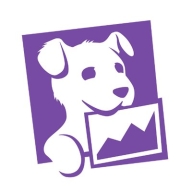

Datadog and Observe are leading observability platforms competing in the realm of application performance monitoring and data analytics. While Datadog is favored for its pricing and support features, Observe's distinctive capabilities make it an appealing option for those focusing on advanced functionalities.
Features:Datadog provides infrastructure monitoring, log management, and comprehensive dashboards to facilitate performance tracking across different environments. Observe focuses on data correlation and visualization, delivering integrated insights into complex systems.
Ease of Deployment and Customer Service:Datadog ensures a swift deployment with simple integration into existing systems, backed by supportive customer service. Observe highlights an intuitive setup and emphasizes a guided experience for new users, offering streamlined support for faster adaptation.
Pricing and ROI:Datadog's competitive pricing paired with high ROI stems from its scalability and extensive functionalities, reducing operational overhead. Despite Observe's higher initial costs, its data insights offer substantial ROI, providing value through robust data correlation and visualization.
| Product | Market Share (%) |
|---|---|
| Datadog | 6.0% |
| Observe | 1.0% |
| Other | 93.0% |

| Company Size | Count |
|---|---|
| Small Business | 80 |
| Midsize Enterprise | 46 |
| Large Enterprise | 98 |
Datadog integrates extensive monitoring solutions with features like customizable dashboards and real-time alerting, supporting efficient system management. Its seamless integration capabilities with tools like AWS and Slack make it a critical part of cloud infrastructure monitoring.
Datadog offers centralized logging and monitoring, making troubleshooting fast and efficient. It facilitates performance tracking in cloud environments such as AWS and Azure, utilizing tools like EC2 and APM for service management. Custom metrics and alerts improve the ability to respond to issues swiftly, while real-time tools enhance system responsiveness. However, users express the need for improved query performance, a more intuitive UI, and increased integration capabilities. Concerns about the pricing model's complexity have led to calls for greater transparency and control, and additional advanced customization options are sought. Datadog's implementation requires attention to these aspects, with enhanced documentation and onboarding recommended to reduce the learning curve.
What are Datadog's Key Features?In industries like finance and technology, Datadog is implemented for its monitoring capabilities across cloud architectures. Its ability to aggregate logs and provide a unified view enhances reliability in environments demanding high performance. By leveraging real-time insights and integration with platforms like AWS and Azure, organizations in these sectors efficiently manage their cloud infrastructures, ensuring optimal performance and proactive issue resolution.
Observe is a powerful tool for monitoring and managing IT infrastructures, troubleshooting system issues, improving incident response times, and enhancing operational efficiency through log and metric analysis.
Users turn to Observe to collect, analyze, and visualize logs and metrics from multiple sources, improving overall system performance and reliability. Its integration capabilities with other tools allow for centralized and simplified data management. The platform's intuitive design, powerful search capabilities, and customizable dashboards make it a valuable asset for IT infrastructure monitoring and management. Users cite real-time monitoring and detailed analytics as significant advantages, alongside technical support and adaptability to diverse workflows.
What are the key features of Observe?
What benefits and ROI should users look for in reviews?
Observe is widely used in industries that require robust IT infrastructure management, such as finance, healthcare, and e-commerce. It supports these industries by providing them with tools for comprehensive monitoring, detailed analytics, and efficient incident response, ensuring higher system reliability and performance.
We monitor all Application Performance Monitoring (APM) and Observability reviews to prevent fraudulent reviews and keep review quality high. We do not post reviews by company employees or direct competitors. We validate each review for authenticity via cross-reference with LinkedIn, and personal follow-up with the reviewer when necessary.